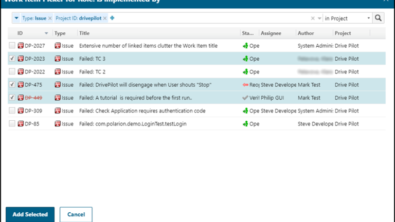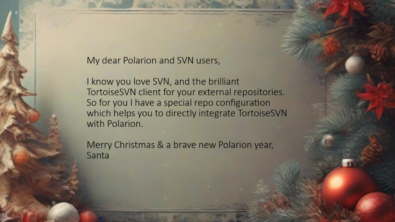Managing Requirements your way (Part 2)
In the previous post we defined the requirements lifecycle and we outlined its formats and capture methods. Let’s now take a look at a few of the ways organizations approach requirements management today. Depending on an organization’s needs, the requirements management process can range from the most simple and rudimentary, to extremely formalized. We’ll also look at ways that Polarion Requirements™ can be used to enhance and improve each method of working.
In this post we will address the manual requirements process. In the next posts we will take a look into the Agile and Formal requirements processes, and then explore the “Polarion Way”.
The Manual Requirements Process
For many organizations, the requirements management process continues to be a manual process. Elicitation is not tool enabled, but is handled through face to face discussions, workshops and meetings. The capture mechanism is typically a Word document, Excel spreadsheet or PowerPoint presentation, sometimes backed by a UML model. In rare circumstances, a Mind Map will be used as the capture method. The discussion stage is handled through direct interaction over the document through meetings, or the document is circulated to stakeholders via email, and comments are gathered through these virtual interactions using the Track Changes feature in Word, or by saving comments conveyed in the email messages.
This discussion stage is followed by the approval stage, where the document is considered ‘frozen’ – in other words, is printed and signed. In the verification stage of a manual requirements process, the development manager relies upon the approved requirements document, and the development team begins design work on the product. At the acceptance stage, the user/stakeholder examines the product and confirms it meets expectations against the requirements document. If a change is required, a new version of the document is created, and the development manager engages in a cost/benefit analysis on proceeding with the recommended changes.
Manual Process Pros
- Lends itself well to small teams or organizations
- No tool investment
- Low cost – no licensing, maintenance, implementation or installation costs
- No tools to learn
- Minimal to no training requirement
Manual Process Cons
- Effective only in the smallest of organizations and simplest of processes
- Risky, confusing and complex
- Manual versioning, multiple documents
- No ability to perform impact analysis on change
- No knowledge sharing
- No ability to reuse individual or groups of requirements – only documents
Manual Requirements Management the Better Way – With Polarion Requirements
Polarion Software offers a revolutionary yet simple way to uplift and improve the manual requirements process, allowing organizations the ability to gain greater control over their RM efforts, but at a minimal cost, and with a small expense of effort. Here are a few simple steps you can follow to enhance your manual process with Polarion Requirements:
- Capture requirements in a Word document or Excel spreadsheet format. Then using Polarion Requirements, documents are simply transformed into living entity with Polarion LiveDocs™ technology.
- Check the LiveDocs document into the repository.
- Using Word’s hierarchical heading structure and heading tags, identify requirements individually as distinct requirement artifacts, and manage them within the system accordingly.
- Facilitate collaboration among far-flung team members. External contractors and customers, and development team members from around the world use LiveDocs to collaborate in real time to craft requirements online. Simply by using a Web browser, team members can edit a requirements document – just as easily as editing a document on the desktop. Everyone’s edits are revealed in real time, and are automatically maintained in a requirements structure called a module that also preserves sorting.
Polarion’s LiveDocs™ features allows teams previously hampered by the constraints of manual process to access advanced RM capabilities such as traceability and suspect link checking, and to harness workflow enabled processes to drive and control team behaviors and actions. LiveDocs also enables better and more sophisticated change control, allowing changes to requirements within the repository to be synchronized with their parent document, and vice versa.
Six Ways Polarion Requirements Benefits the Manual Requirements Process
- Teams collaborate better
- Discussions and approvals are fully tracked
- Requirements are versioned and never lost
- Requirements are stored in a secure environment and accessible via a web browser
- Requirements can be searched
- Requirements can be shared and reused
What’s next
In the next post we will address the Agile Requirements Management process, with some tips about how to apply and improve it in your environment.

Editor’s Note:
Stefano Rizzo is VP for Product Management at Polarion Software. He oversees the strategic development of Polarion’s software products. You can read his profile at http://www.polarion.com/company/people/index.php.


